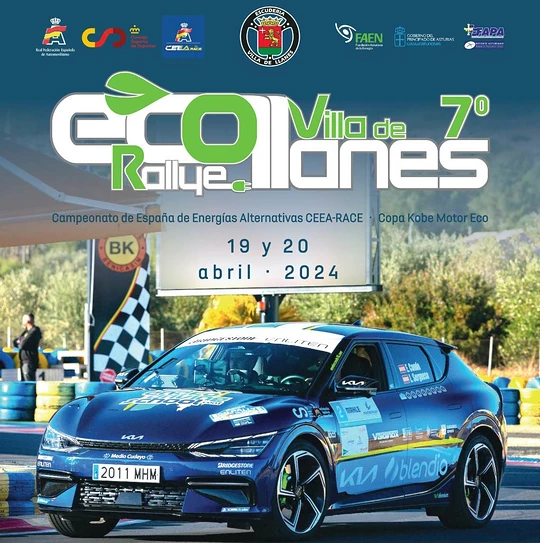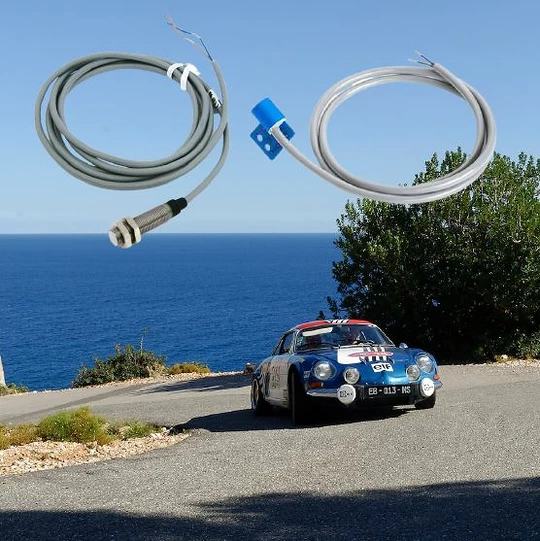The objective of Blunik as timers is to measure who is the best in the competition, and the truth is that there are many teams in the Rally Costa Brava and Rally Costa Brava Històric that are very good and are so precise they require extremely well-done precise timekeeping.
Good timekeeping has 4 relevant parts, and each of them must be coordinated and work together to obtain a good result. All 4 are important and essential.
- The timing devices
- Communications
- Classification software
- The organisation personnel
The timing devices
The timing devices of the BLUNIK PRECISION CHRONO system are the transponders in the cars and the TICS on the road.
Transponders are the devices that identify each race participant. They are easy to install, wireless, and with a long-lasting battery that allows 10-day rallies to be done. They also have an internal memory.
TICS are the devices we put on the road as secret controls. These devices are robust, easy to install, with a long-lasting internal battery and energy-saving features. But what is most relevant is that they have a long range powerful infra-red light beam to do the same job as a photocell, and, therefore, they take the pass time of each car with a precision of 1 metre.
Another point to highlight of the timing devices is the internal clocks and time setting. The Blunik Precision Chrono system synchronises everything with a single click. It’s a very useful function for the user, but which has required a significant amount of development and which no other system has.
Communications
Communications are something else that goes unnoticed by people and which are extremely difficult from a technical perspective.
Timings of all the cars must be sent to the base, the sooner the better so the results can be published quickly.
The system we use at the Rally Costa Brava Històric is through the timing broom wagon (well, 2 timing broom wagons) which cover the whole route, stopping at each secret control, gathering the data with a device and sending them via GPRS communications to the base (or to a server in the cloud).
The system we operate at the FIA Rally Costa Brava uses Tipers, a device that is put at the Stop control (where the cars stop at the end of the section), which gathers the data from the transponders and automatically sends them via GPRS to the base (or to a server in the cloud).
Classification software
The classification software is another relevant point. Consider that in the Rally Costa Brava Històric 2020 we had 182 secret control points, which in total collected 8937 timings. Organising all this information is a task of the PC software and of the person who uses this software.
Having a good tool that can be configured according to the regulations is important.
The faster this PC software is, the faster the classifications can be presented. The BRC software developed by Blunik have multiple functionalities and has evolved over the years. In fact, the demands of rallies such as the Rally Costa Brava have made us design exclusive functions for their regulations, such as the joker score (getting the worst result) or that of the non-joker (a control that does not allow for elimination by the joker).
The organisation personnel
The timing figures and tasks are:
Jordi Parro (rallyclassics): the person who prepares the whole route and timekeeping before the rally.
- Measures the route. Key point so the participants can follow the roadbook.
- Decides the secret points (with precision to the metre) Measures the position of the secret points. Creates the documentation so that those who install the TICS do so in the planned place. Key point for the regularity to be precision regularity as participants show they want.
- Organises the timekeeping logistics. Organises the 3 or 4 timekeeping cars that will be used on the day of the rally. Schedules, tasks, documentation, etc.
Ramon Garcia (rallyclassics): timer for the race.
- Configures the software adapted to the regulations.
- Receives the data and has to know where they come from. Must connect the digital information (the timings of each TIC) with the position the TIC was in along the section.
- Generates the classifications and publishes them on the Internet.
This work requires a lot of responsibility and experience. It is necessary to know how to interpret the classifications very well so as not to commit human errors, as well as to know some things about statistics to detect possible changes in TIC positions, mistaken departure minutes, among others.
This work is done at the Rally base, connected to the permanent monitoring information, incidents, abandonments, etc. It is important that the information is first-hand and the sooner the better.
Esther Carreras and JM Carreras (Blunik): installation of transponders
- They install the transponders and do the relevant configuration for each race participant.
- They start and verify the transponders on the starting line (trivial work but extremely important. A transponder that is switched off would be a fatal error for the race participant in question).
- We provide permanent help to the base and for generation of classifications.
2 Cars (4 people) set up the TICS (RallyClassics personnel)
- They synchronise the time on all the timing devices
- They follow the route of the sections and install the TICS in the correct position. They follow the plan very precisely.
Scheduling, time management, responsibility and a job well done are characteristic of the people that do this work. It may seem easy and trivial, but in reality, that is not the case. They work during the rally; everything must be done right the first time.
They also have to do it under any circumstances, day, night, rain, cold, wind, etc.
2 Timing Broom Wagons (4 people) (RallyClassics personnel)
- They follow the route of the sections to read the TIC timing data, while removing the TICs from the road.
- They supervise the work of colleagues who set up the TICs. Any error must be detected in time.
- They send the digital timings to the Base. They must have GPRS coverage. Sometimes there is no coverage in a section but luckily, they are mobile and, therefore, they can search for coverage or simply follow the rally route to send the data.
Scheduling, time management, responsibility and a job well done are characteristics of the people who do this work. It may seem easy and trivial, but in reality, that is not the case. They work during the rally, where everything must be done right the first time.
Furthermore, they have to do it under any circumstances, day, night, rain, cold, wind, etc.
These are the 4 pillars and each has to work perfectly. We have to be demanding with ourselves because the participants of all sports competitions are demanding with the result.
The timing has to be the “judge” and decide who has done it best with specific parameters. And under no circumstances can it be a “party” that influences participants’ results and classification.
The organisation personnel, coordination, communication, work, responsibility, capacity to solve problems or anticipate them are also key factors for good timekeeping. In the last few years new tools have been introduced such as mobiles, WhatsApp groups, the sending of voice messages, GPS monitoring, etc., which have helped us to work with more information and coordination.
A job well done does not have borders! As a Blunik manager I am happy with the rallyclassics - Blunik tandem, I believe that together we provide what we propose and what participants want, precision timing for a precision regularity rally.




